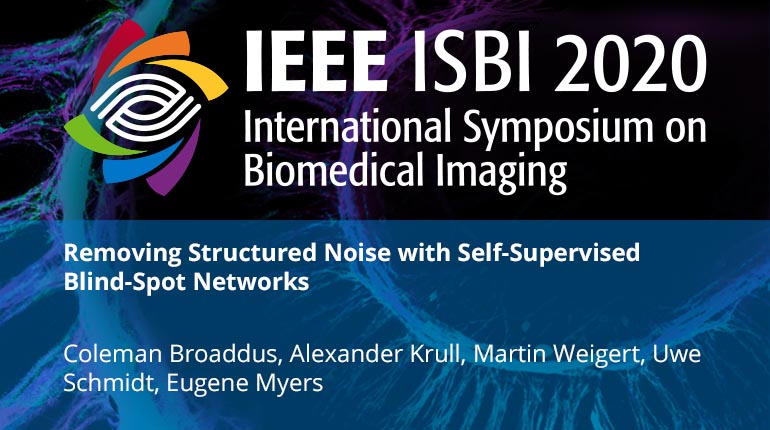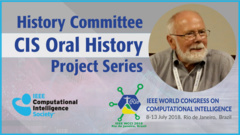
Already purchased this program?
Login to View
This video program is a part of the Premium package:
Removing Structured Noise with Self-Supervised Blind-Spot Networks
- IEEE MemberUS $11.00
- Society MemberUS $0.00
- IEEE Student MemberUS $11.00
- Non-IEEE MemberUS $15.00
Removing Structured Noise with Self-Supervised Blind-Spot Networks
Removal of noise from fluorescence microscopy images is an important first step in many biological analysis pipelines. Current state-of-the-art supervised methods employ convolutional neural networks that are trained with clean (ground-truth) images. Recently, it was shown that self-supervised image denoising with blind spot networks achieves excellent performance even when ground-truth images are not available, as is common in fluorescence microscopy. However, these approaches, e.g. Noise2Void (N2V), generally assume pixel-wise independent noise, thus limiting their applicability in situations where spatially correlated (structured) noise is present. To overcome this limitation, we present Structured Noise2Void (StructN2V), a generalization of blind spot networks that enables removal of structured noise without requiring an explicit noise model or ground truth data. Specifically, we propose to use an extended blind mask (rather than a single pixel/blind spot), whose shape is adapted to the structure of the noise. We evaluate our approach on two real datasets and show that StructN2V considerably improves the removal of structured noise compared to existing standard and blind-spot based techniques.
Removal of noise from fluorescence microscopy images is an important first step in many biological analysis pipelines. Current state-of-the-art supervised methods employ convolutional neural networks that are trained with clean (ground-truth) images. Recently, it was shown that self-supervised image denoising with blind spot networks achieves excellent performance even when ground-truth images are not available, as is common in fluorescence microscopy. However, these approaches, e.g. Noise2Void (N2V), generally assume pixel-wise independent noise, thus limiting their applicability in situations where spatially correlated (structured) noise is present. To overcome this limitation, we present Structured Noise2Void (StructN2V), a generalization of blind spot networks that enables removal of structured noise without requiring an explicit noise model or ground truth data. Specifically, we propose to use an extended blind mask (rather than a single pixel/blind spot), whose shape is adapted to the structure of the noise. We evaluate our approach on two real datasets and show that StructN2V considerably improves the removal of structured noise compared to existing standard and blind-spot based techniques.
 Cart
Cart Create Account
Create Account Sign In
Sign In





